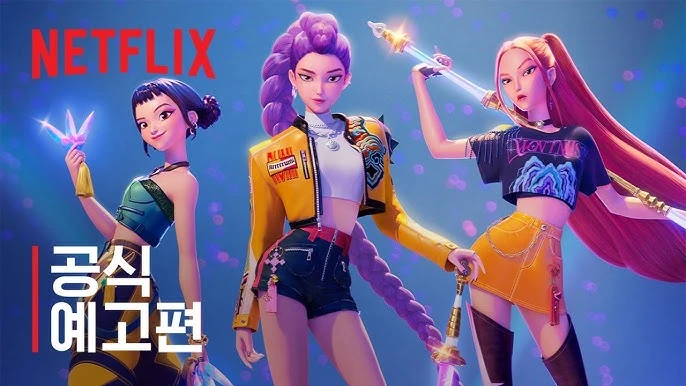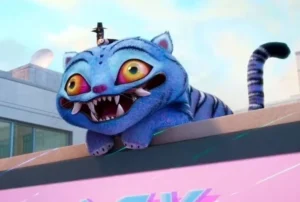More Than Just a Hit Song
The Netflix animated film ‘K-POP Demon Hunters’ has taken the world by storm. Immediately after its release, it swept the number one spot in the Netflix film category in dozens of countries and achieved a phenomenal 96% Fresh rating on the American review site Rotten Tomatoes, creating a true syndrome.
On the surface, the film’s appeal is clear. It’s packed with elements for everyone to enjoy: the vibrant and stylish visuals characteristic of Sony Pictures Animation, an energetic K-pop soundtrack featuring top-tier artists like TWICE, and the exciting premise of ‘idols who are secretly demon hunters.’
However, the true value and cultural achievement of this film lie beyond the dazzling spotlight. ‘K-POP Demon Hunters’ is not just a K-pop-themed movie. It is a “love letter to Korean culture,” deeply and authentically capturing the essence of Korean mythology, folklore, and modern culture. What if the cute, cat-like mascot in the movie is actually one of Korea’s most powerful symbols? What if the rival group’s name holds a chilling prophecy? Let’s now delve into the special secrets of this film.
Part 1: The ‘Tiger’ in a Cat’s Skin: The True Identity of Mascot Derpy
Most viewers who first see the mascot ‘Derpy’ following the demon Jinwoo in the film would perceive him as a cute, somewhat clumsy cat or dog-like creature. The name ‘Derpy,’ derived from a slang term meaning ‘silly and foolish expression,’ reinforces the impression that he is merely a comical character.
But here, the first twist is revealed. Derpy is not a cat. He is a tiger. This simple fact bestows layers of cultural symbolism upon the character.
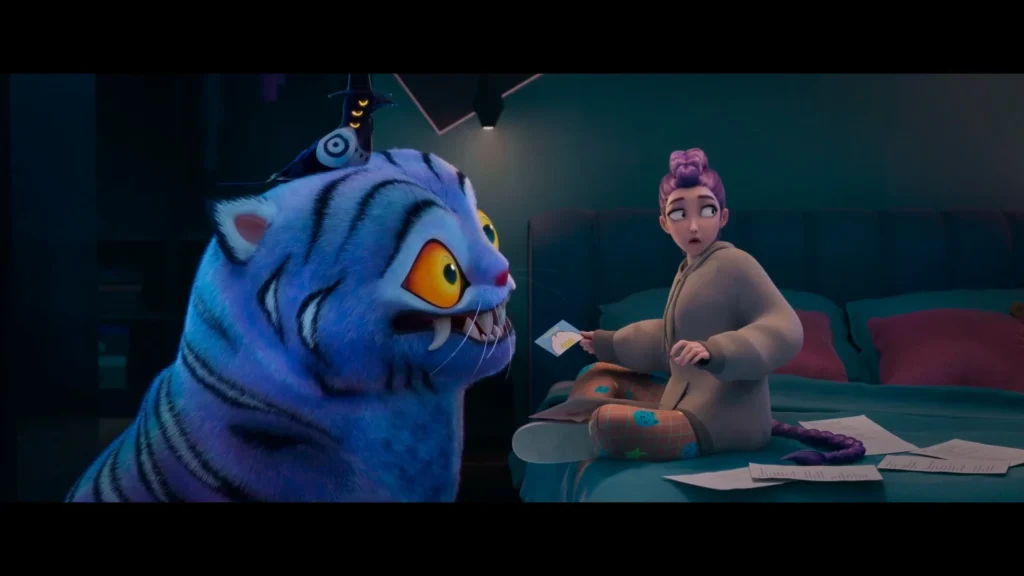
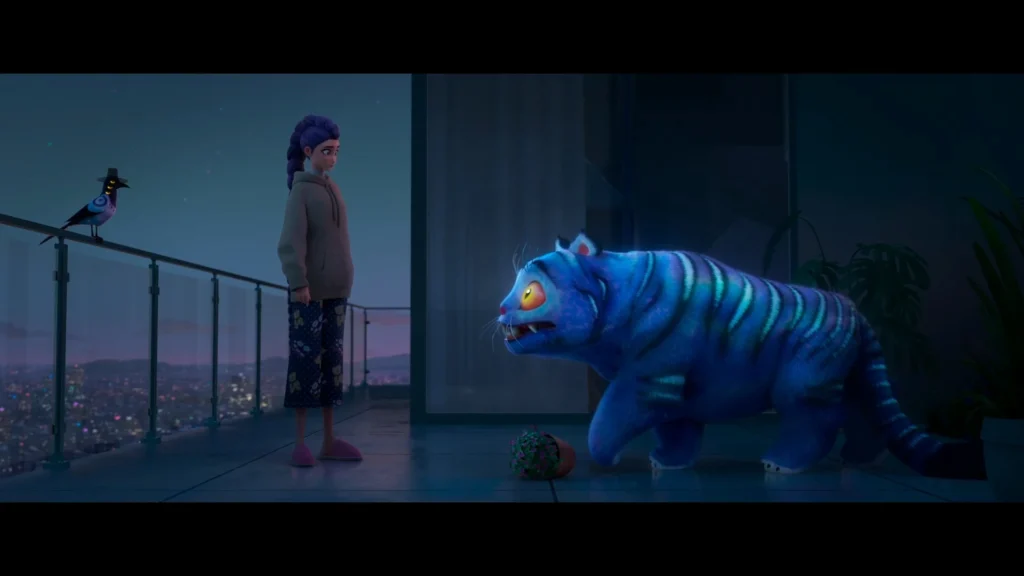
The Two Faces of the Korean Tiger
In Korean culture, the tiger is not just a fierce beast but a sacred being. It has been worshipped as ‘Sanshin’ (Mountain Spirit), a guardian spirit of the mountains, or as a ‘Byeoksa’ (Evil-repelling entity) that wards off evil spirits and brings good fortune.
On the other hand, the tiger depicted in Korean folk paintings, or ‘Minhwa,’ shows a completely different side. As director Maggie Kang revealed she was directly inspired by it, especially in the magpie and tiger paintings called ‘Jakhodo,’ the majestic tiger is often humorously portrayed as simple-minded, friendly, and even a fool being scolded by a small magpie. Derpy’s design—with his chubby body, short legs, and trademark ‘derpy’ expression with crossed eyes—is a direct screen adaptation of this folk painting tiger.
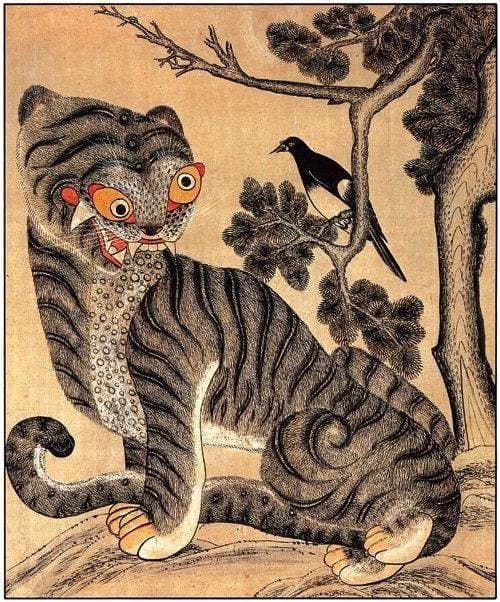
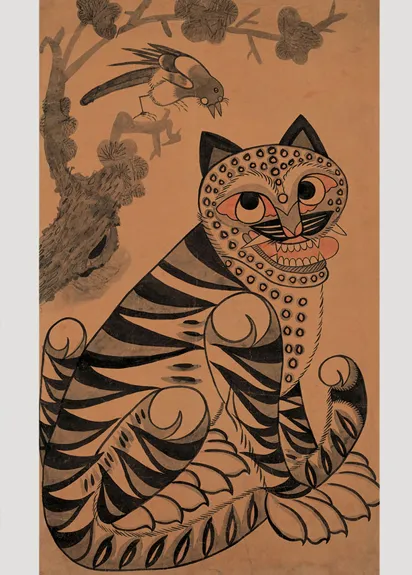
What’s more interesting is that Derpy is almost always accompanied by a magpie named ‘Sussie’ or ‘Mr. Seo’ (which means Mr. Seo in Korean). The sight of these two together gives audiences familiar with Korean culture the pleasure of seeing a traditional ‘Jakhodo’ folk painting come to life.
Derpy’s characterization perfectly embodies this duality of the tiger. He fulfills his role as a guardian spirit, delivering letters and helping the protagonists, while his obsessive-compulsive need to put things in their place and his clumsy actions reflect the personality of the foolish tiger from folk paintings. This goes beyond a simple gag character, showing a deep understanding and reflection of the complex image of the tiger in Korean culture. This dual charm—fearsome yet friendly, sacred yet somewhat clumsy—elevates Derpy from a mere mascot to a symbolic being that penetrates the film’s theme. Just as the protagonists, ‘Huntrix,’ are both idols and demon hunters, Derpy hides the power of a mighty guardian spirit beneath a cute exterior. Through Derpy, the film constantly tells the audience, “What you see is not all there is. Look deeper.”
Part 2: More Than a ‘Lion’: The Chilling Duality in the Name ‘SAjA Boys’
The name of the rival group in ‘K-POP Demon Hunters,’ ‘SAjA Boys,’ is a prime example of the film’s clever wordplay. For English-speaking audiences, ‘Saja’ evokes ‘lion,’ a name that perfectly fits the concept of the ‘king of the beasts’ dominating the K-pop jungle.
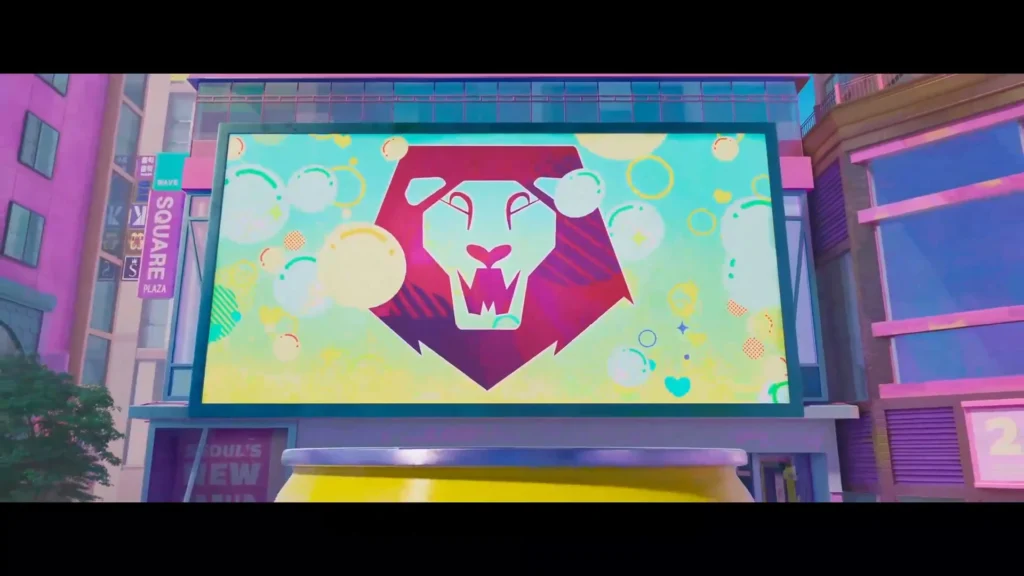
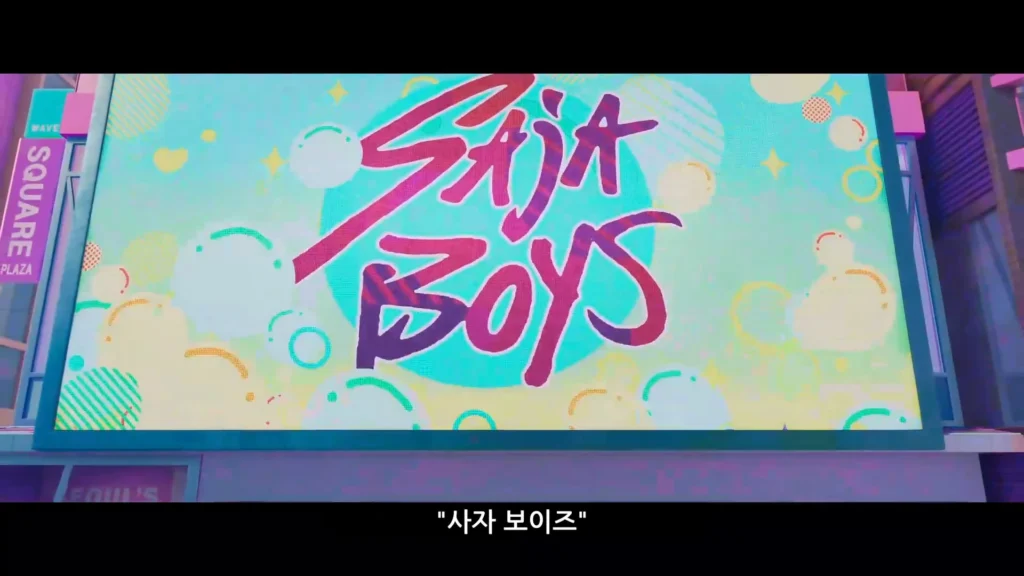
However, to a Korean speaker, the word ‘saja’ carries a completely different, much more sinister meaning: the ‘saja’ from ‘Jeoseung-saja’ (Grim Reaper). ‘Saja’ is a Sino-Korean word meaning ‘messenger’ or ‘envoy,’ and in a supernatural context, it almost invariably refers to the being who comes to collect the souls of the dead under the command of the underworld—the Korean Grim Reaper. Therefore, ‘SAjA Boys’ are not ‘Lion Boys,’ but literally ‘Grim Reaper Boys.’ This name is a blatant foreshadowing of their true identity.
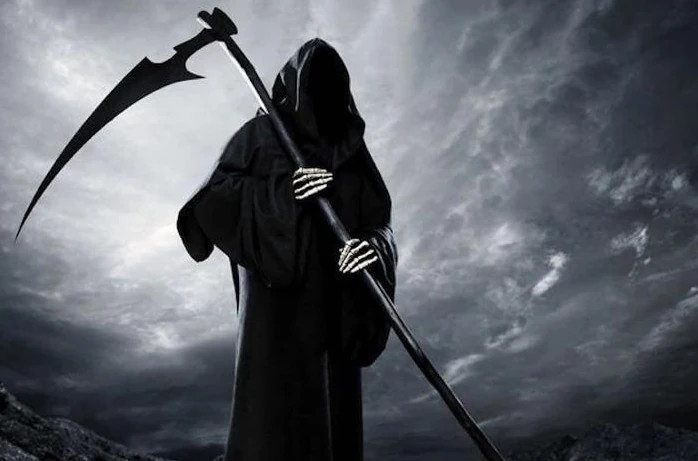
The Evolution of the Korean Grim Reaper
Traditionally, the Grim Reaper was depicted as an emotionless official of the afterlife with a pale face, dressed in a black robe and a ‘gat’ (traditional hat). However, in modern Korean popular culture, especially after the explosive success of the drama ‘Goblin’ and the film series ‘Along with the Gods,’ the image of the Grim Reaper has been dramatically reinvented. They have transformed into charming characters with tragically handsome looks, dressed in stylish black suits.
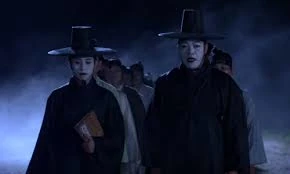
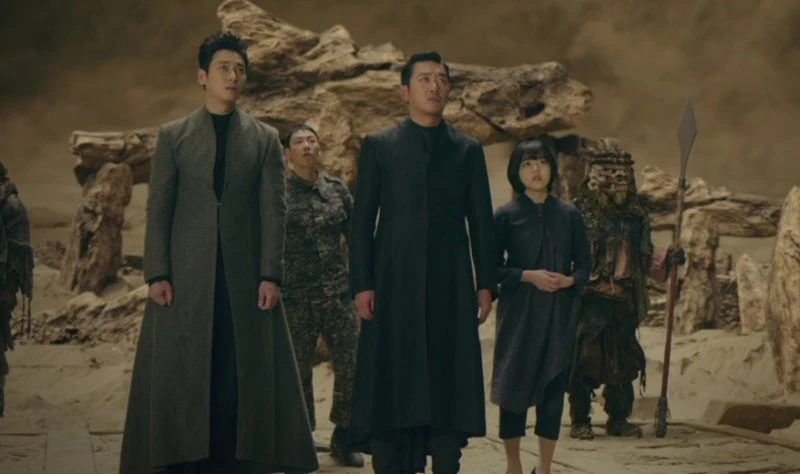
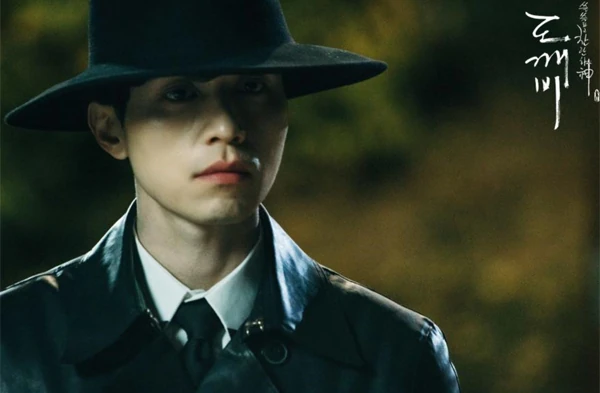
The ‘SAjA Boys’ are the ultimate fusion of this successful K-content formula of the ‘handsome Grim Reaper’ with another formula, the ‘K-pop idol.’ They are ‘underworld idols’ who absorb the soul energy of their fans to offer it to the demon king ‘Gwima.’
This identity adds a chilling depth to their music. Looking at the lyrics of their hit song ‘Your Idol,’ we find lines like, “You gave me your heart, now I’ll take your soul too.” In a typical K-pop song, this would merely be a metaphor for obsessive love. But once you know they are real Grim Reapers, these lyrics become not a metaphor, but a ‘literal declaration.’ Their ‘soul-stealing’ charisma and ‘fatal’ stage performances are no longer figures of speech.
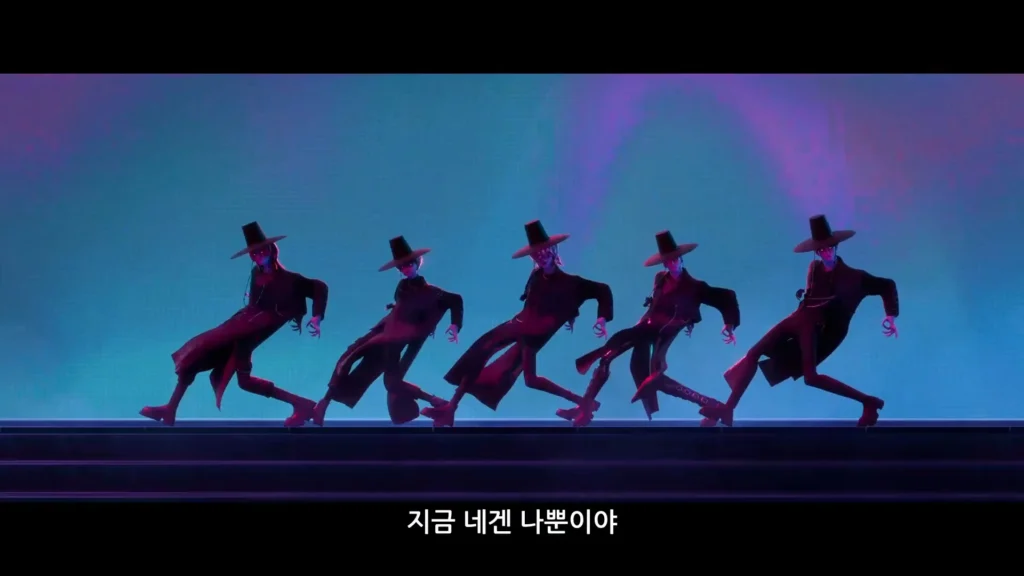
This setup offers a sharp insight into the nature of fandom culture. The irony that the act of fans dedicating their love and energy to idols fuels the forces of evil cleverly unpacks the intense interaction of K-pop fandom, which blurs the lines between virtual and reality, within a mythological framework. The phenomenon of the fictional idol group forming a massive real-world fandom, to the point of receiving actual debut requests, proves how accurately the creators understood and reinvented the core appeal of K-pop and K-drama fantasies.
Part 3: The Demon-Slaying Weapons: Shamanism and Huntrix’s Spiritual Power
The exorcism action in ‘K-POP Demon Hunters’ has different roots from the magic commonly seen in Western fantasy. The film’s worldview is deeply rooted in ‘Musok’ (shamanism), Korea’s traditional folk religion. Director Maggie Kang herself stated that the concept of idols defeating demons through song and dance was inspired by the Korean shamanistic ritual of ‘gut’ (exorcism), a performance through which a shaman communicates with the spiritual world. In other words, the protagonist girl group ‘Huntrix’ are modern-day shamans of the 21st century.
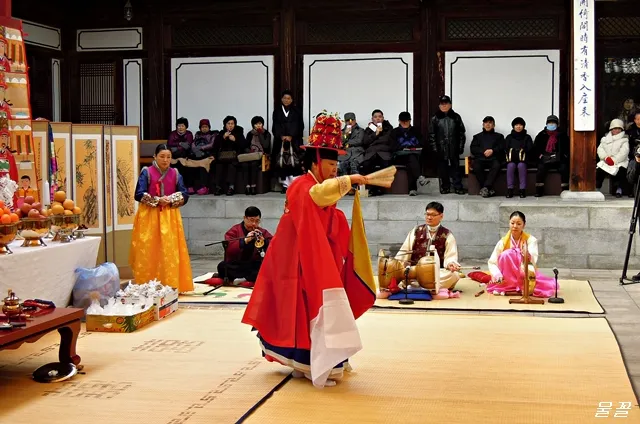
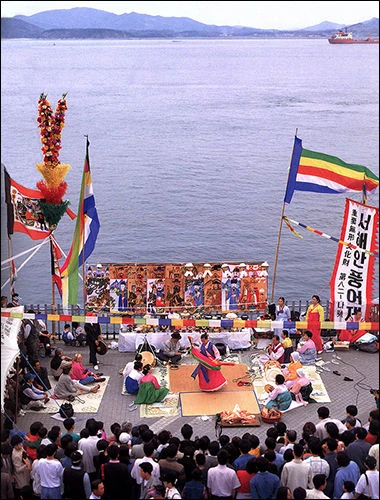
Weapons Imbued with Sacred Power
The weapons used by the Huntrix members are not just simple swords but ‘sinmul’ (sacred objects), each with deep shamanistic and spiritual significance.
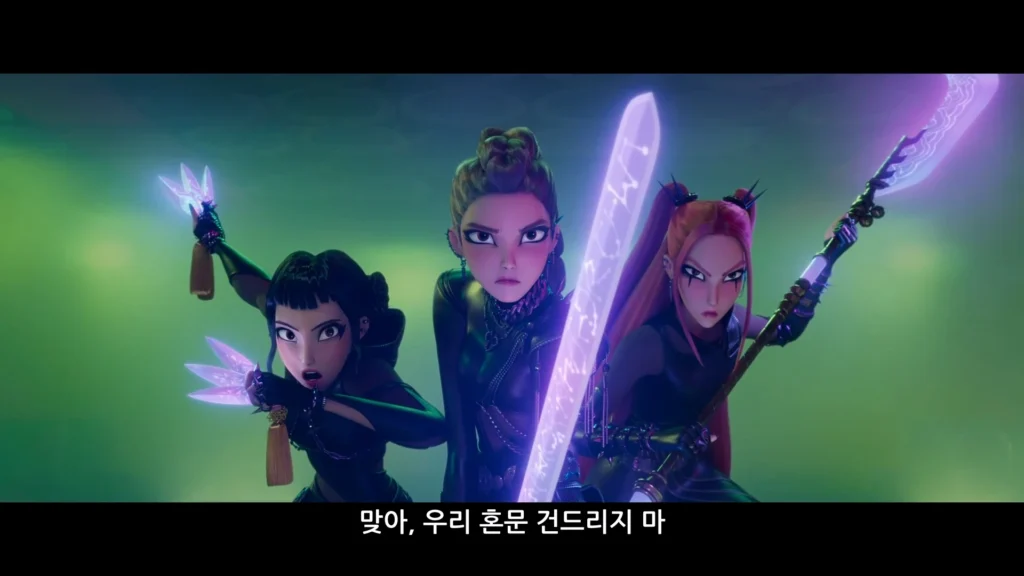
Lumi’s ‘Sainchamsageom’
The leader Lumi’s primary weapon is the ‘Sainchamsageom.’ This is a spiritual sword that has actually been crafted by the royal family since the Joseon Dynasty, with its name meaning ‘the sword that slays evil with the power of four tigers.’ The secret to this sword’s power lies in its name, ‘Sain’ (Four Tigers). ‘In’ symbolizes the tiger in the Chinese zodiac, and a true ‘Saingeom’ can only be forged when all the cosmic energies of the tiger overlap. A sword forged at this sacred time was believed to possess the ultimate ‘byeoksa’ ability to defeat all evil spirits and disasters. The fact that Lumi, the leader, wields this sword signifies that she is a symbol of purification and salvation.
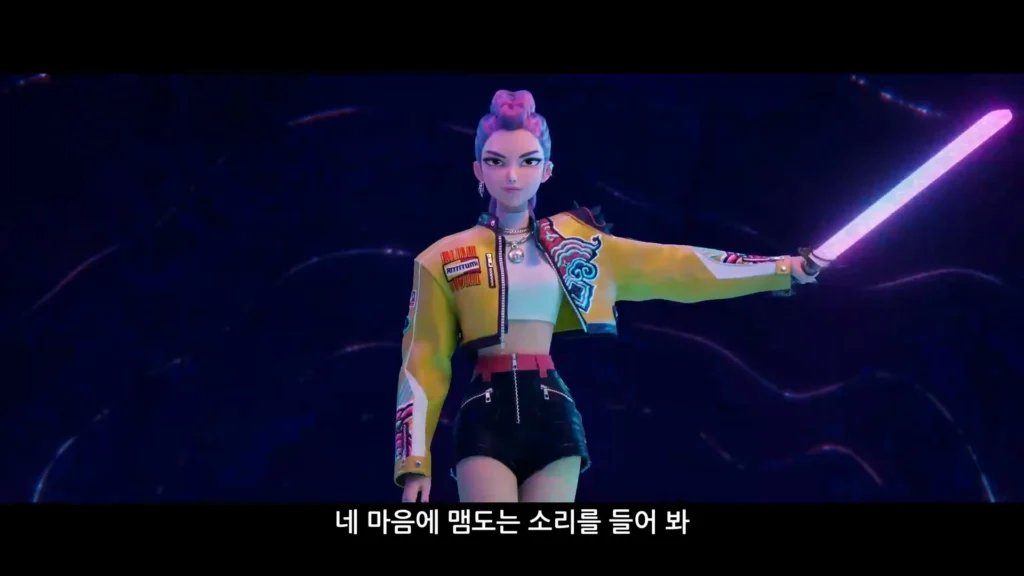
Joy’s ‘Shinkal’
Rapper Joy’s weapon is the ‘Shinkal’ (Divine Sword). Literally meaning ‘sword of God,’ this weapon is not a combat dagger but one of the core ritual tools used by Korean shamans in a ‘gut.’ The ‘shinkal’ is a medium for summoning gods and borrowing their power, and it plays the sacred role of cutting away impurities and severing the influence of evil spirits. The scene where Joy throws the ‘shinkal’ like a dart to annihilate demons is a modern reinterpretation of this sacred purification ritual into action.
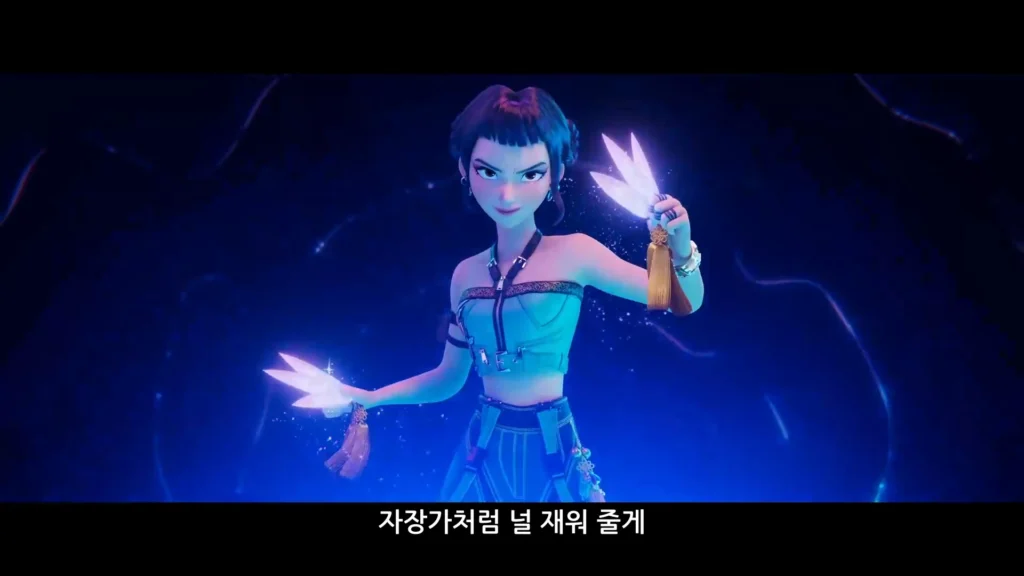
Mira’s ‘Gokdo’
Vocalist Mira’s main weapon is the ‘Gokdo’. This is a polearm used by soldiers in the ancient Gaya and Three Kingdoms periods, characterized by a crescent-shaped blade. The ‘Gokdo’ was also used as a ceremonial or decorative weapon, considered a weapon with shamanistic symbolism beyond the battlefield. The curved blade is optimized for slashing enemies, while its elegant curve also implies ‘flow’ and ‘circulation.’
Mira’s use of the ‘Gokdo’ shows that she is not merely a warrior who eliminates evil through brute force, but a being who understands and attunes to traditional shamanistic nature and the flow of spirits. She wields the ‘Gokdo’ to dismantle the energy of demons, overpowering her foes with a soft yet powerful trajectory. This characteristic emphasizes Mira as a character symbolizing ‘finesse within strength’ and ‘harmony within combat.’
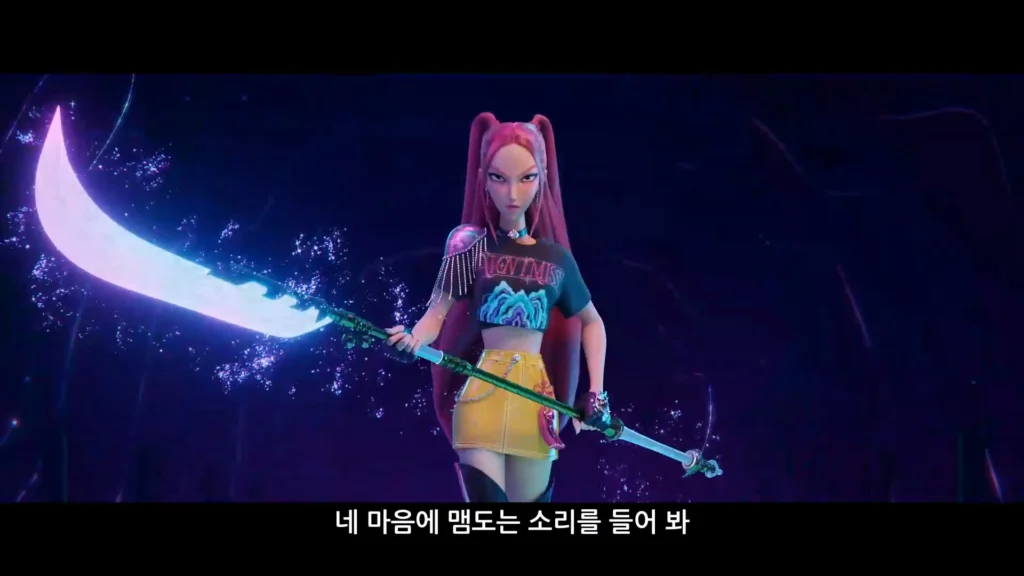
The Master’s Sanctuary: ‘Seonangdang’
Huntrix’s spiritual mentor and a first-generation idol hunter, ‘Celine,’ lives in seclusion on Jeju Island, protecting a ‘Seonangdang.’ A ‘Seonangdang’ is a traditional sanctuary, typically in the form of a sacred tree or a stone pile at a village entrance or on a mountain pass, dedicated to the village’s guardian deity. By establishing Celine not just as a hermit but as the guardian of a ‘Seonangdang,’ the film connects her authority and the hunters’ spiritual lineage to a specific space in Korean folk religion. This device shows that the hunters’ power is not a mere superpower but is rooted in a deep and sacred tradition.
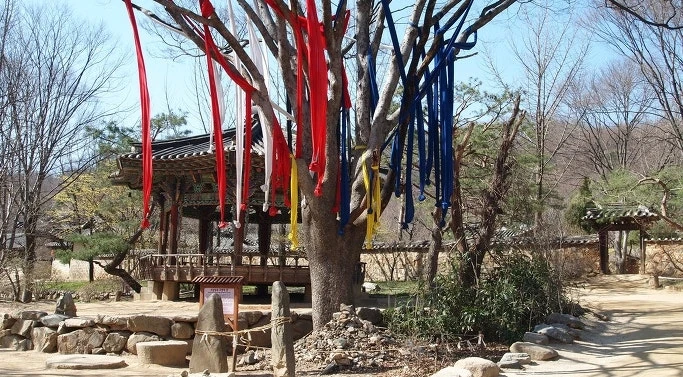
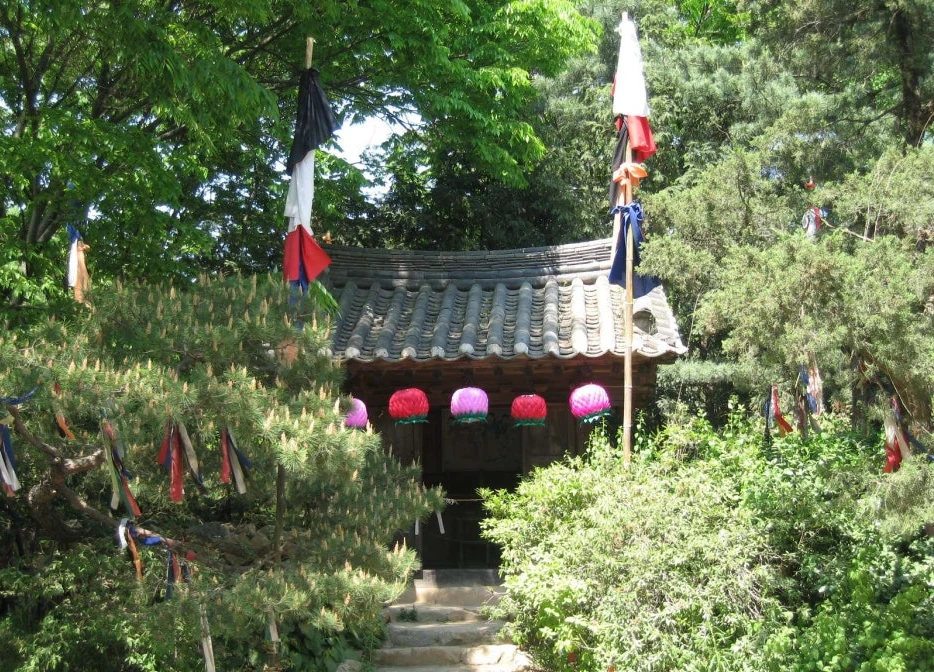
In this way, ‘K-POP Demon Hunters’ unfolds the universal narrative of the battle between good and evil within the framework of Korea’s unique shamanism and folk beliefs. Huntrix are superheroes and, at the same time, modern successors to an ancient spiritual tradition, and their K-pop stage becomes a grand ‘gutpan’ (exorcism stage) to save the world. This deep understanding of and respect for the source culture is why this film is acclaimed as a true cultural monument, going beyond simple cultural appropriation.
Part 4: The Real Taste of Seoul: Authenticity in Food, Places, and Pop Culture
The authenticity of ‘K-POP Demon Hunters’ shines even brighter in the details that capture the everyday landscape of modern Korea, beyond mythology and folklore.
Beyond Clichés, The Real ‘K-Food’
Director Maggie Kang stated that she made a conscious decision “not to show kimchi.” This was a deliberate move away from it being consumed as a typical cliché symbolizing Korea in foreign content, and a declaration to show a deeper culture.
Instead, the film brings the real ‘taste of daily life’ embedded in the lives of Koreans to the screen. The scene of eating cup ramen and ‘gimbap’ in the dressing room before a performance, street foods like ‘hotteok,’ ‘seolleongtang,’ and even ‘naengmyeon’ (cold noodles), which is connected to the director’s personal family history—the foods featured in the film are very familiar to Koreans and spark fresh curiosity in foreigners.
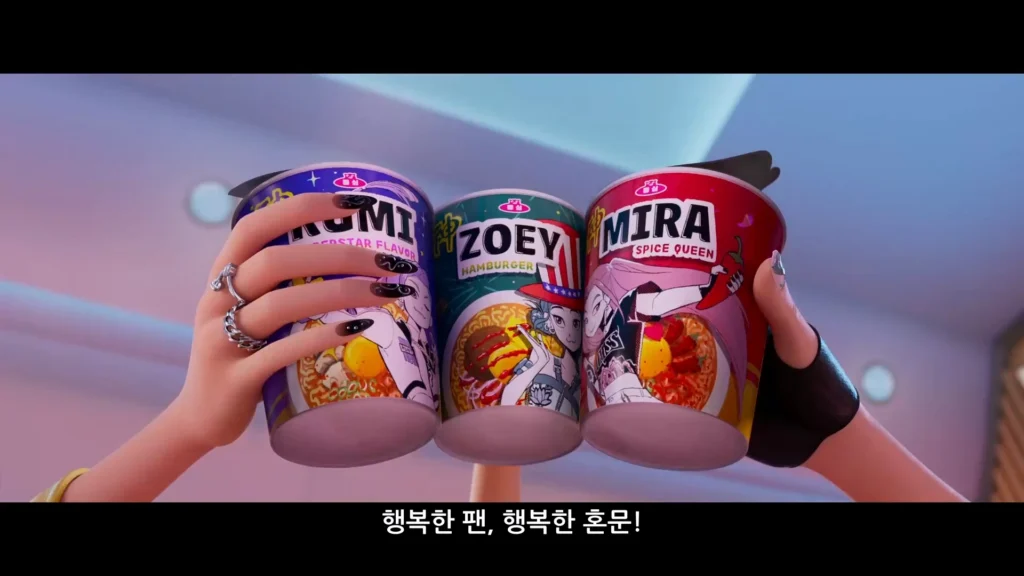
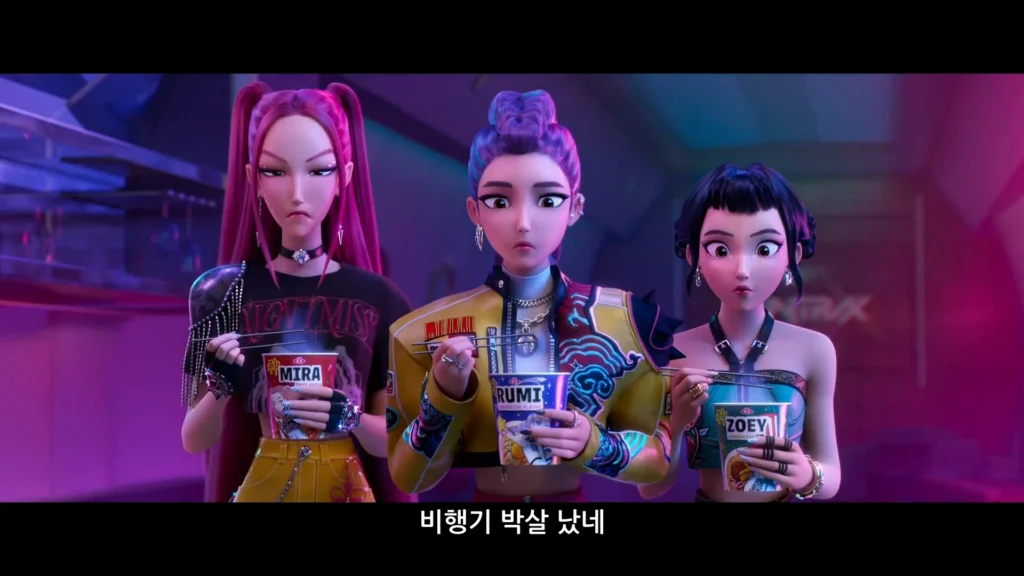
The detail in the cup ramen is particularly admirable. The brand name ‘Dongshim,’ a parody of the real ramen giant ‘Nongshim,’ and the cleverly altered logo of another food company, ‘Otoki’ (parody of Ottogi), are ‘Easter eggs’ that only someone with an insider’s knowledge of Korean pop culture could create. Furthermore, the detail of a character folding a napkin to place their spoon and chopsticks on during a meal, added based on the suggestion of Korean staff, is a crucial touch that, while easily overlooked, vividly portrays Korean dining culture. *Dongshim (동심) = innocence of childhood

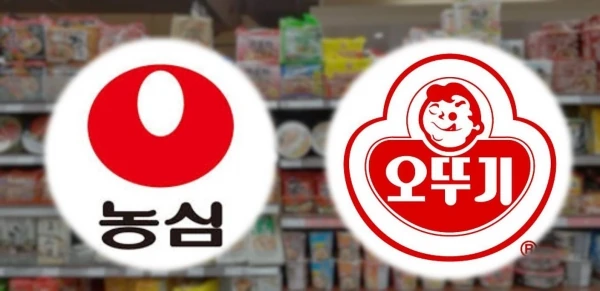
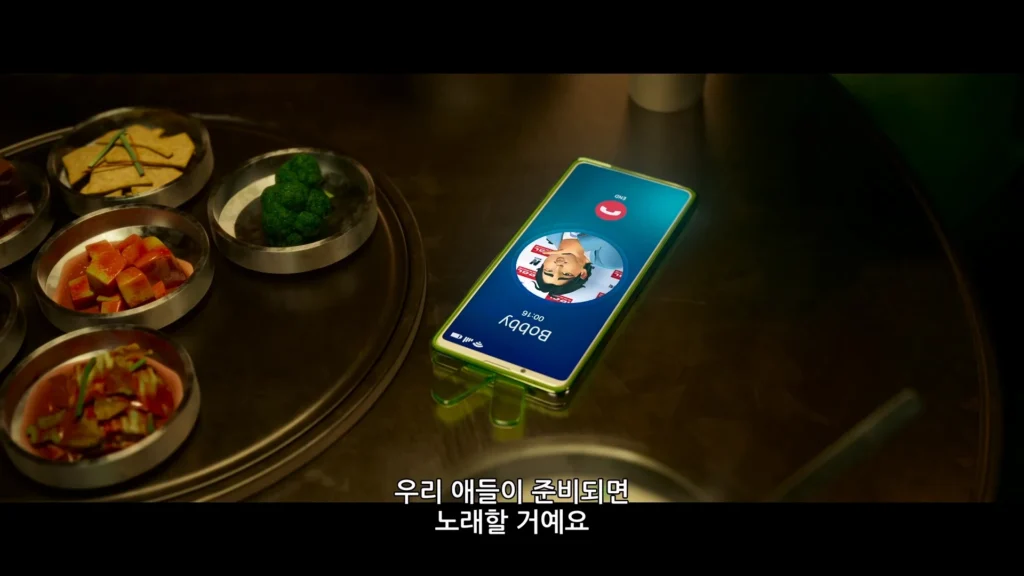
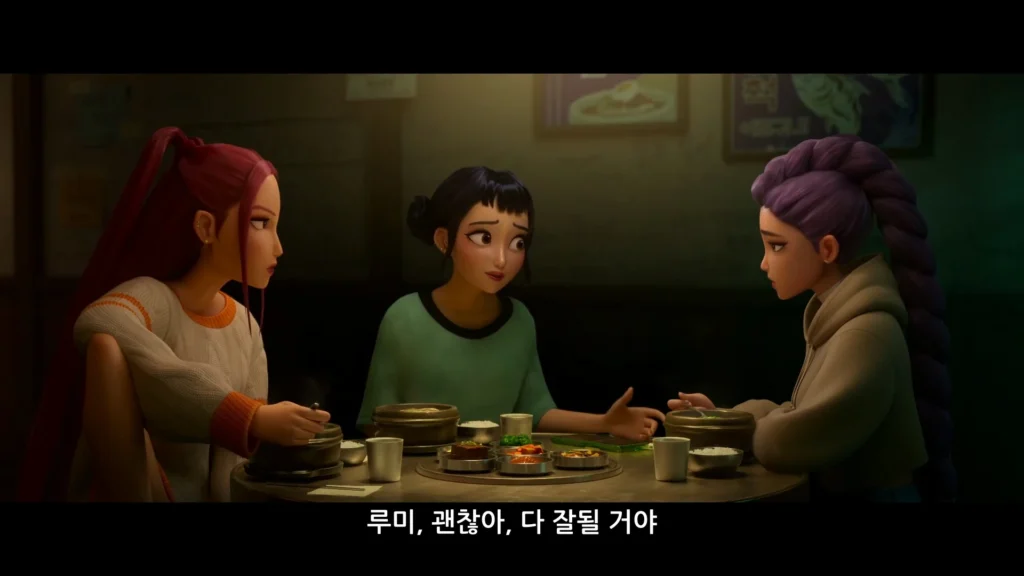
The Scenery of Seoul and the K-Pop Scene
The depiction of Seoul, the film’s setting, is also not a mere sketch. The production team personally visited Korea to photograph and analyze in detail the steep hills of Bukchon Hanok Village, the brick texture of Myeongdong streets, and the subway line maps and signs of Seoul. As a result, the Seoul in the film gained a life-like realism.
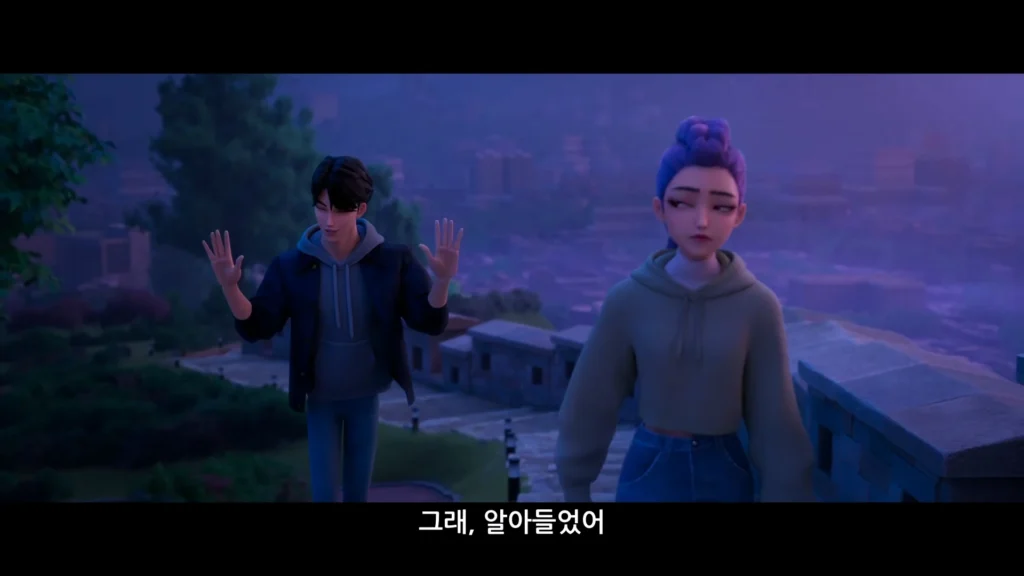
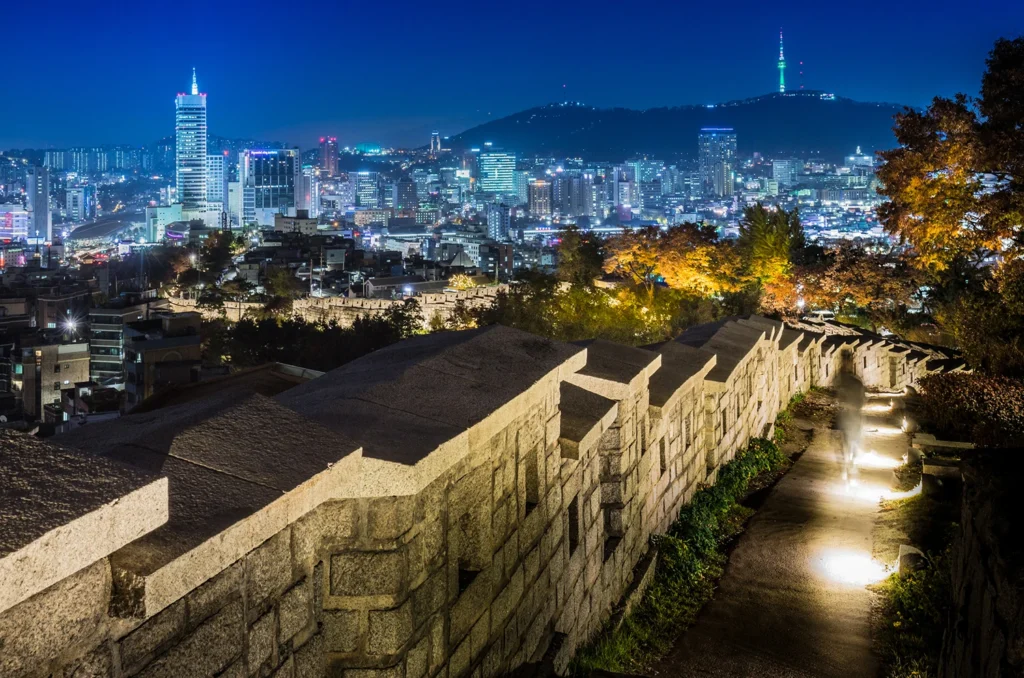
The portrayal of popular culture is no different. The variety show ‘PLAY GAMES WITH US,’ featuring Huntrix and the SAjA Boys, is a perfect parody of the iconic program ‘Weekly Idol,’ recognizable to any K-pop fan. In particular, the two clumsy male MCs seem to be a direct transfer of the ‘DoniConi’ (Jeong Hyeong-don, Defconn) duo who led the heyday of ‘Weekly Idol.’
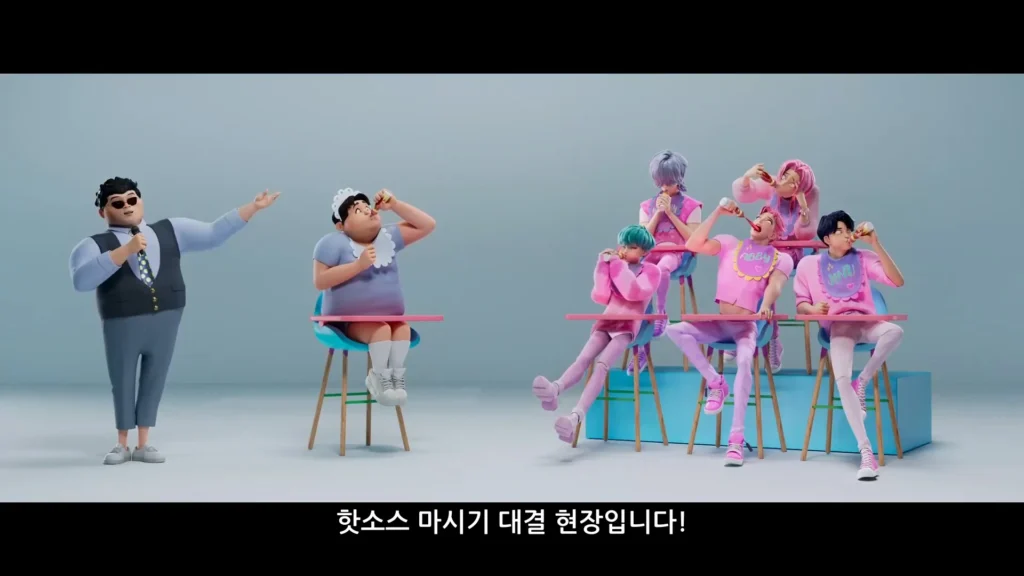
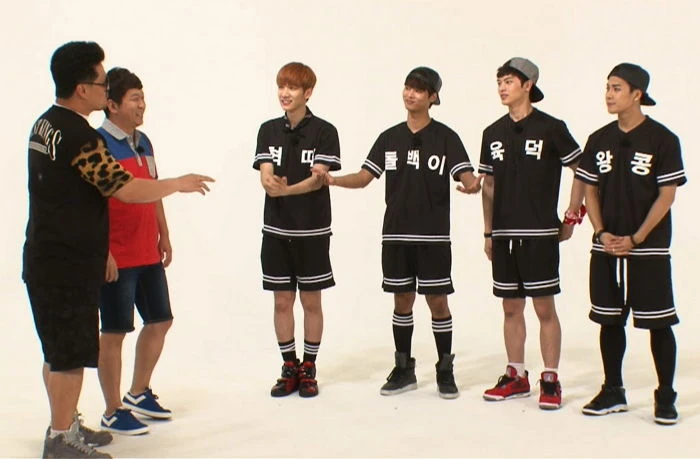

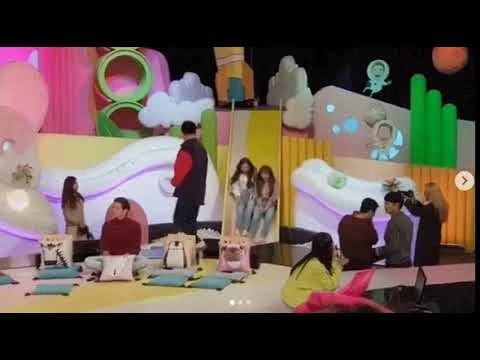
These details add realistic depth and humor to the story, going beyond simple background scenery. By showing Korea not as an exotic spectacle but as a ‘living space,’ the film builds a universal connection that transcends cultural barriers. It sends a warm message to Korean audiences and global K-pop fans: “We know the world you live in, and we respect and celebrate it.” This profound authenticity is the core reason why ‘K-POP Demon Hunters’ is receiving enthusiastic support both in Korea and abroad.
Conclusion: A New Standard for Cultural Storytelling
The success of ‘K-POP Demon Hunters’ stems from the depth hidden beneath its superficial splendor. The lovely tiger guardian Derpy, who seems to have popped out of a folk painting; the fatal idol group SAjA Boys, hiding their identity as Grim Reapers; Huntrix’s sacred weapons rooted in Korean shamanism; and the vivid details capturing the daily life of modern Seoul. All these elements combine to make this work not just an animation, but a cultural event.
This film has proven that the most powerful global content can be born when a country’s culture is confidently brought to the forefront in its uniqueness and specificity, rather than being diluted or altered. It has shown that a well-made, authentic story is universal in itself. If you’ve gained a new perspective through this article, why not go on your own ‘demon hunt’ by watching the film again and discovering the other cultural treasures the creators have hidden in every frame?

